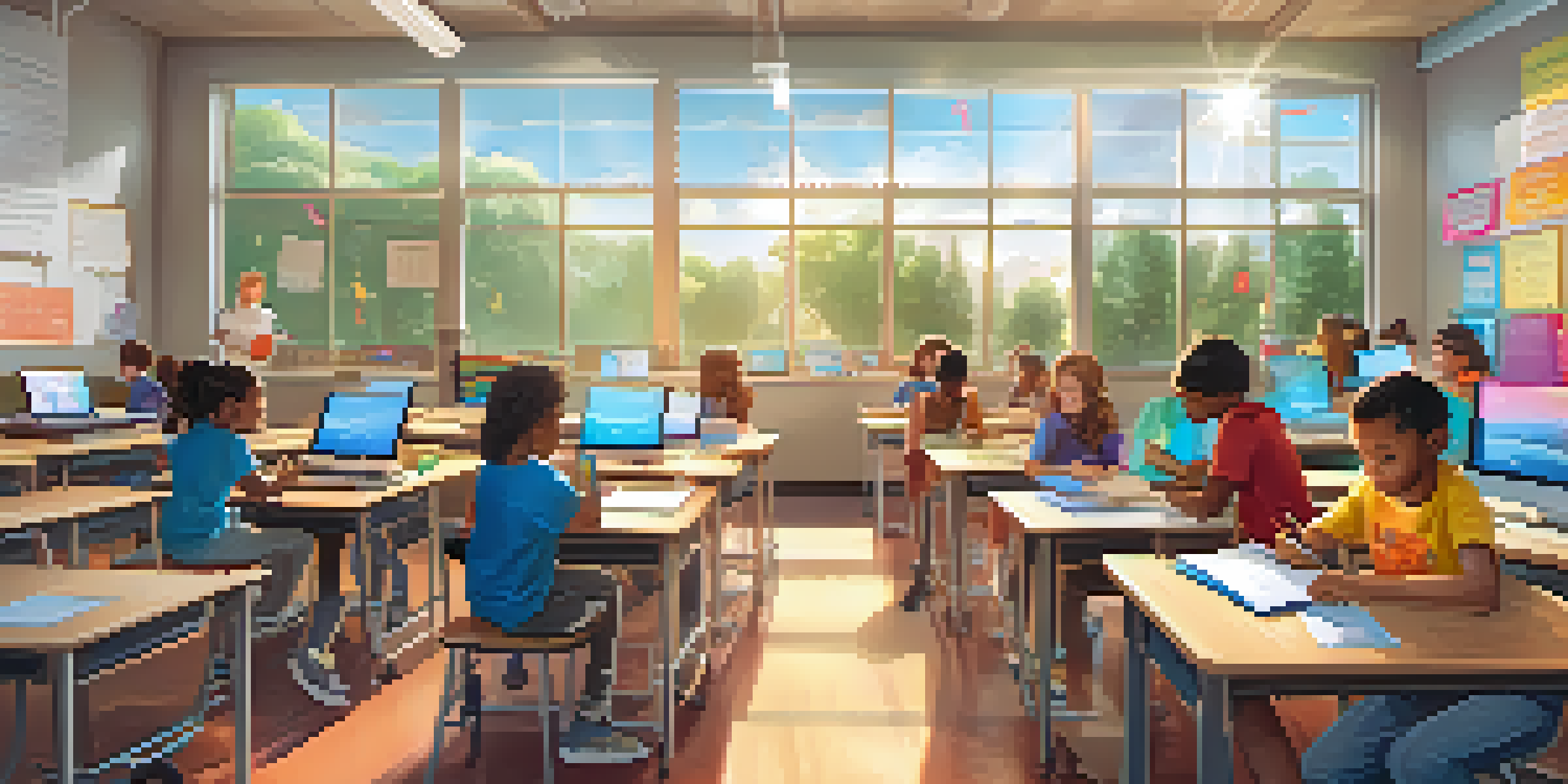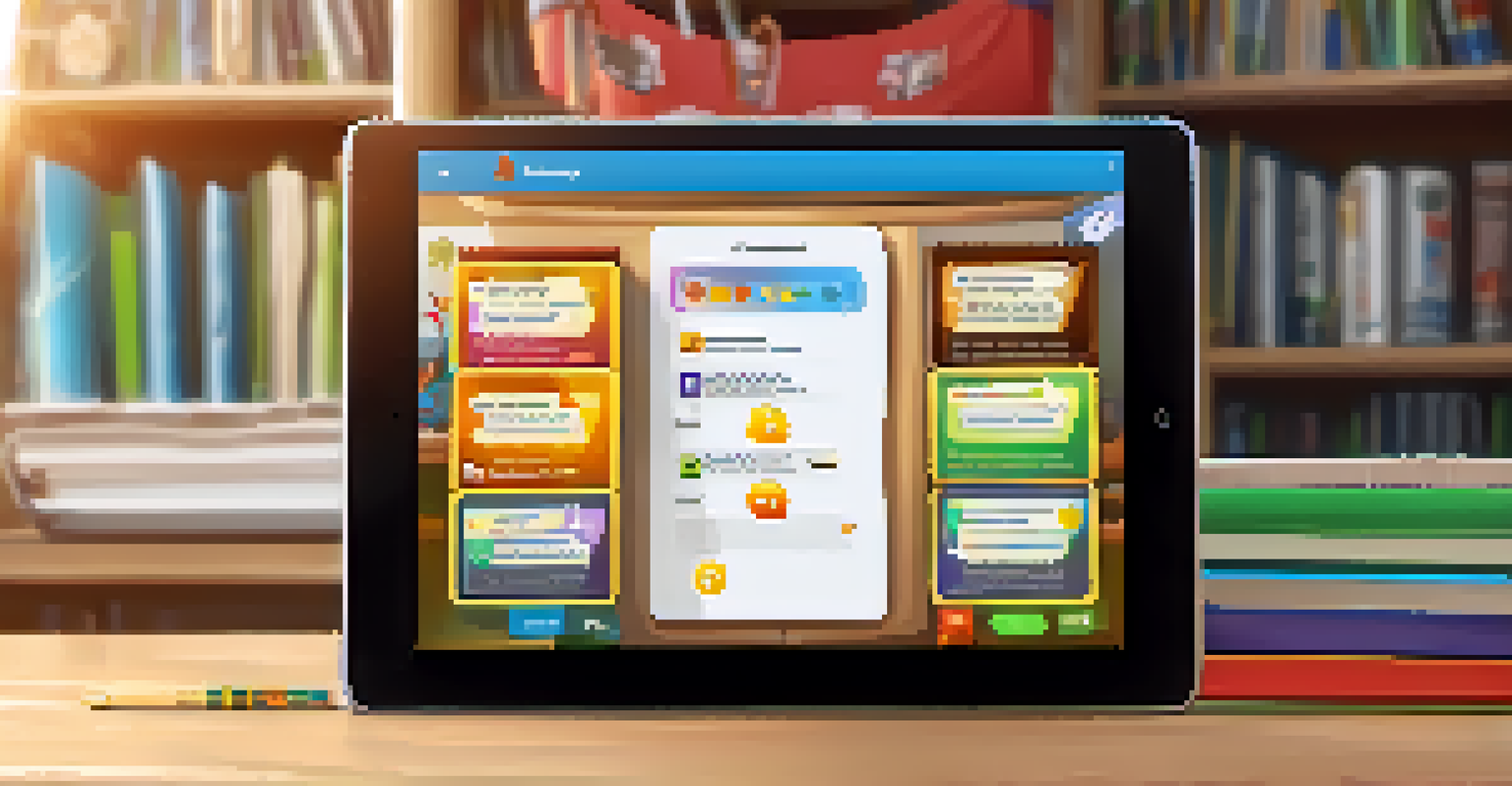The Role of Personalization in Effective Gamified Learning

Understanding Gamified Learning in Education
Gamified learning combines elements of game design with educational principles to create engaging learning experiences. By integrating game-like features such as points, badges, and leaderboards, educators aim to motivate students and enhance their learning outcomes. This approach taps into our natural inclination to play and compete, making the learning process more enjoyable and effective.
Games are the most elevated form of investigation.
However, not all students respond to gamified learning in the same way. Individual preferences, learning styles, and motivations can vary significantly, which is where personalization becomes crucial. Tailoring the gamified experience to fit each learner's unique needs can make a world of difference in their engagement and retention of information.
For example, a student who thrives on competition may benefit from a leaderboard system, while another who prefers collaborative efforts might find more value in team-based challenges. Recognizing these differences is essential for creating a truly effective gamified learning environment.
The Power of Personalization in Learning
Personalization in learning refers to customizing educational experiences to meet the individual needs of students. This can include adjusting the content, pace, and even the learning environment based on a learner's preferences and progress. The goal is to create a more meaningful and relevant experience that fosters deeper engagement and understanding.

When applied to gamified learning, personalization can significantly enhance motivation. By allowing learners to choose their paths, set personal goals, and engage with content that resonates with them, educators can create a sense of ownership and investment in the learning process. This shift from a one-size-fits-all approach to a more tailored strategy can lead to improved learning outcomes.
Gamification Boosts Learning Engagement
Integrating game-like features in education enhances motivation and makes learning more enjoyable for students.
For instance, a platform that adapts challenges based on a student's performance can keep them in their optimal zone of challenge, preventing frustration or boredom. This fine-tuning ensures that learners remain engaged and motivated throughout their educational journey.
How Personalization Enhances User Engagement
User engagement is a critical component of effective learning, and personalization plays a key role in enhancing it. By tailoring experiences to fit individual preferences, learners are more likely to interact with the content actively. This active engagement not only boosts motivation but also facilitates better retention of information.
The greatest gift is a passion for reading. It is cheap, it consoles, it entertains, and it gives you an enormous advantage in life.
Consider a scenario where learners can select their preferred themes or avatars in a gamified platform. This small touch of personalization can make the experience feel more relatable and enjoyable, encouraging learners to spend more time on the platform. As they explore and engage with content that feels relevant to them, their overall satisfaction and retention rates can improve significantly.
Moreover, personalized feedback based on individual progress can foster a deeper connection between the learner and the material. When students receive targeted suggestions or rewards that reflect their achievements, they are more likely to feel valued and understood, further enhancing their engagement.
Creating Personalized Learning Paths
One effective strategy for incorporating personalization in gamified learning is developing personalized learning paths. These paths allow students to progress through content at their own pace, choosing challenges and activities that align with their interests and skill levels. By offering flexibility, educators can cater to diverse learning styles and preferences.
For instance, a student struggling with a particular concept might be directed towards additional practice games tailored to that area, while another who excels might be encouraged to tackle more advanced challenges. This level of customization not only helps students master the material but also fosters a sense of achievement as they navigate their unique learning journeys.
Personalization is Key to Success
Tailoring gamified experiences to individual learning styles and preferences significantly improves student engagement and retention.
Additionally, incorporating checkpoints where learners can reflect on their progress and adjust their paths can further enhance the personalization process. This reflection encourages self-directed learning, empowering students to take charge of their educational experiences.
Leveraging Data for Personalization
Data plays a pivotal role in enabling effective personalization in gamified learning. By analyzing student interactions, preferences, and progress, educators can gain valuable insights into what works best for each learner. This data-driven approach allows for ongoing adjustments and refinements to the learning experience.
For example, if a significant number of students struggle with a specific game level, educators can modify the difficulty or provide additional resources to support them. Conversely, if certain challenges are consistently completed with ease, it may be time to introduce more advanced options. This continuous feedback loop ensures that the learning experience remains relevant and engaging.
Moreover, leveraging data can help identify trends and patterns across different learners, allowing educators to implement broad strategies that support various groups while still catering to individual needs. This dual focus on personalization and collective insights can create a more inclusive and effective learning environment.
The Role of Feedback in Personalized Gamified Learning
Feedback is a fundamental aspect of the learning process, and in gamified learning, it becomes even more critical. Personalized feedback not only acknowledges individual achievements but also guides learners on their journey. By providing timely and specific responses, educators can reinforce positive behaviors and address areas that need improvement.
For example, a gamified platform might use instant feedback mechanisms, such as notifications or progress badges, to highlight a learner's accomplishments. This immediate recognition can motivate students to continue engaging with the material and striving for better results. It creates a positive reinforcement cycle that fuels ongoing participation.
Data Drives Effective Personalization
Analyzing student interactions and feedback allows educators to continuously refine and adapt learning experiences to better meet learner needs.
Additionally, encouraging learners to set goals and reflect on their progress with the help of personalized feedback can cultivate a growth mindset. When students understand that their efforts lead to tangible improvements, they are more likely to embrace challenges and view setbacks as opportunities to grow.
Challenges and Considerations in Personalization
While personalization offers numerous benefits in gamified learning, it also presents certain challenges. One of the main hurdles is ensuring that the personalization efforts do not overwhelm educators or complicate the learning experience. Striking the right balance between customization and simplicity is crucial for maintaining engagement and effectiveness.
Another consideration is the potential for data privacy concerns. As educators leverage data to create personalized experiences, it is essential to ensure that student information is handled responsibly and ethically. Transparency about data usage can help build trust between educators and learners.

Lastly, personalization requires ongoing assessment and iteration. What works for one group of learners may not be effective for another, so educators must remain flexible and responsive to feedback. Embracing a mindset of continuous improvement can lead to more successful and engaging gamified learning experiences.